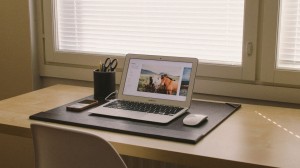For the last few months, I have been writing about the value of preserving your core competencies. If you’re GE or Kodak or Microsoft, or even if you are you (!), your core competency is the heart and soul of your business.
Where you are going and what you are building will happen on the bedrock of who you are to the public and your customers. At core, Kodak will always be about preserving images. GE will always be about great engineering and manufacturing industrial and commercial machines. Microsoft is about processing and storing information.
By connecting to the reason you are in business, you can make good decisions about where to place your focus now and in the future. If you want to drift too far from your core mission, consider starting a new business. But just because you stick to your knitting, as it were, it doesn’t mean you shouldn’t embrace change. In fact, staying in business is all about the art of embracing life-sustaining change.
The Art of Embracing Change
Change for the sake of change is just so much wasted motion. Healthy change is very different. Healthy change is innovation and the life blood of your organization. It is knowing when the environment or external conditions require your response to stay vibrant. Healthy change can also come from inside your organization. The best kind of internal healthy change comes from developing new products, services and processes that set a new standard requiring others in your industry and the external environment to respond to you.
Living organisms are always changing. With rapid advances in technology and global 24/7 interconnectivity, nothing stays the same for more than a New York minute. To remain competitive, your organization will respond to this change, and perhaps even initiate some of it. That doesn’t mean that the core elements that define your organization don’t deserve the respect they have earned. Consistency is a good thing, especially in the midst of change.
Preserving Core Competencies is not Stagnation
Let me repeat that. Preserving your company’s core competencies is not about stagnation. It is healthy to preserve what works and how your customers know you. Play to your strengths.
Stagnation is different. Stagnation is that enemy of innovation: “This is the way we’ve always done it.” If something is the way you’ve always done it, it’s time to look at your products, services and processes and rethink it. When you rethink it, you may find you have already optimized the way it can be done. For now.
Due to the rapid changes in technology, and changes in education and (get this) people, the way you have always done things is probably not the best way to do things now. Real healthy change is about keeping things alive. Like a shark, if your organization stops moving, it’s dead.
BYOD, IoT and Embracing Change
I have been kicking around the tension between preserving core competencies and embracing innovation for a few months. An article from from CIO Insight last week gave me the clarity to organize my thought on this issue. In How the IoT and BYOD Increase Business Agility , author D.P. Morrissey discusses the vulnerabilities, inevitability and impact of both the Internet of Things and Bring Your Own Device on companies. Quoting a survey by Tata Consultancy Services, the article says:
“The topic has become the focus of passionate examination and spirited debate at the top-most level of a growing number of major companies around the world … The early IoT leaders are more likely to digitally reimagine their businesses and produce substantial value for customers, not just value for themselves.”
Like a Shark
Yes, the value of your business’s core competencies cannot be overstated. They cannot be lost. However, as long as your company plans to operate in the 21st Century – and perhaps beyond – it must keep moving.
Morrissey encapsulates the essence of this tension when he says, “There is little forgiveness for the slow in business. Just as evolution rewards the strong, businesses that embrace agility and IoT practices will be rewarded by leading markets and financial categories.”



